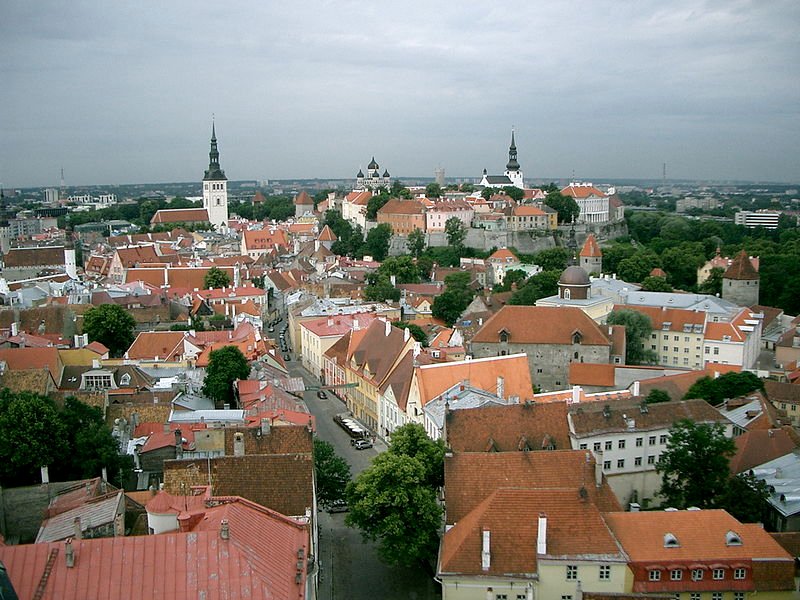 Tallinn, Estonia
Tallinn, EstoniaSource: https://commons.wikimedia.org/wiki/File:Vaade_Oleviste_tornist_2004.jpg
Author: Steve Jurvetson

Tallinn is the capital and biggest city in Estonia. It is located on the northern coast of the country facing the Gulf of Finland. Tallinn covers 159.2 sq km (61.5 sq mi) and has a population of 413,000 (2011 estimate). The city is in the Eastern European Time zone, which is two hours ahead of Coordinated Universal Time (UTC+2) and three hours ahead during Daylight Saving Time in summer.
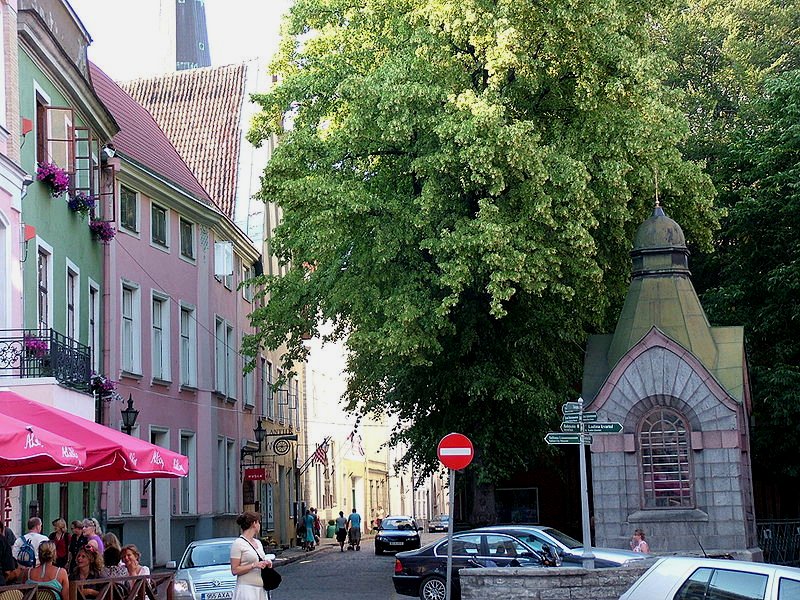 Street in Estonia
Street in EstoniaSource: https://commons.wikimedia.org/wiki/File:Street_in_Tallinn_5.JPG
Author: Horvat

Tallinn is located on a relatively low-lying terrain punctuated by a number of lakes, the biggest of which is Lake Ülemiste, which acts as the main reservoir for the city. Other lakes in Tallinn include Lake Harku, Lake Raku and Lake Manniku. There is a limestone cliff that runs through the city, as well as hillocks, but on the whole the city is quite flat, and the highest point is just 64 m above sea level.
The warmest month in Tallinn is July, when the average high temperature rises to 20.8°C (69.4°F). The coldest months are January and February, when the low temperature may drop to -8°C (18°F) or even more. Snow can be expected between December and March. The wettest month is August, which receives 84 mm (3.31 in) of precipitation.
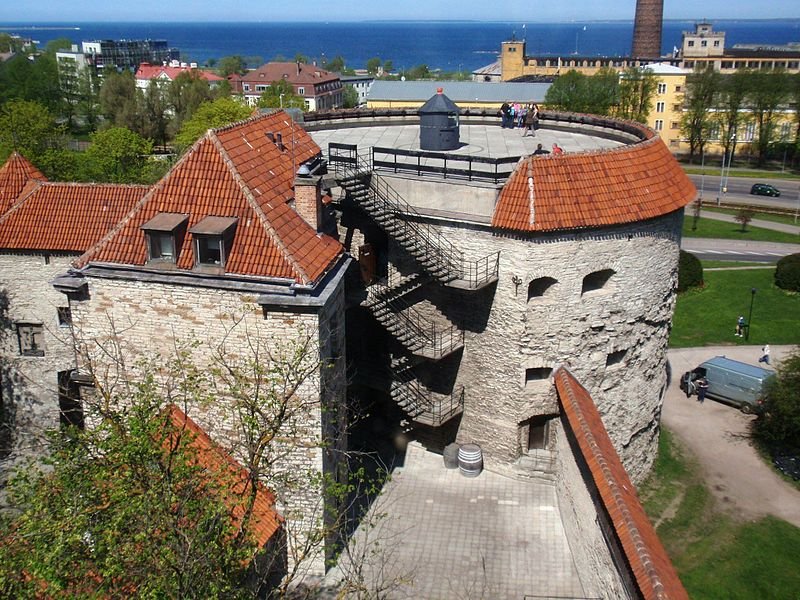 Fat Margaret, Tallinn
Fat Margaret, TallinnSource: https://commons.wikimedia.org/wiki/File:Paks_Margareeta_2011-05-21.JPG
Author: Flying Saucer

Evidence of human habitation in the Tallinn area goes back at least 5,000 years. This is based on remnants of ceramic pottery dating to 3,000 BC that have been discovered. The present city traces its roots back to a fort built in AD 1050. Tallinn was an important port town for trades between Russia and Scandinavia. Due to its importance, it was the target of neighboring powers.
In 1219, Denmark conquered northern Estonia and took over Tallinn. In 1285 it joined the Hanseatic League. Then in 1346, Denmark sold off its territory of northern Estonia, and Tallinn with it, to the Teutonic Knights. The town continued to prosper, cashing in on its enviable location on the crossroad of trade routes.
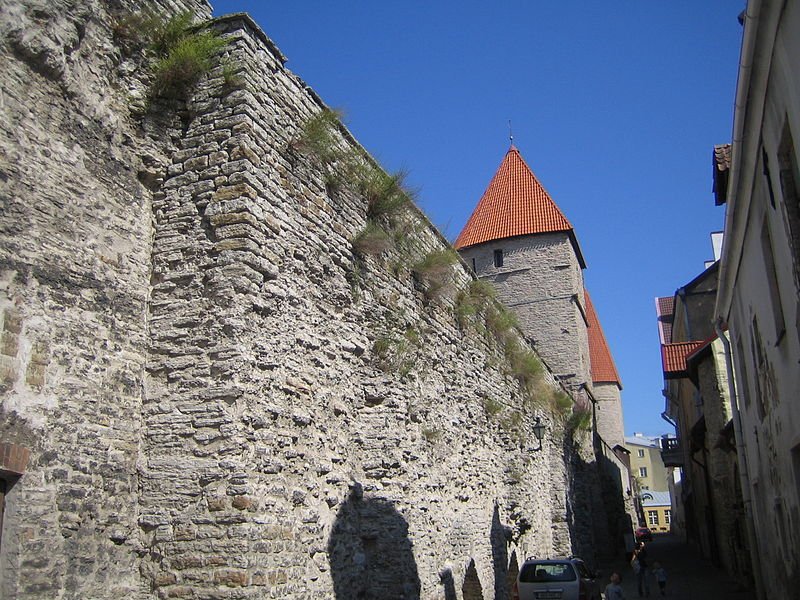 Tallinn City Wall
Tallinn City WallSource: https://commons.wikimedia.org/wiki/File:Laboratooriumi_t%C3%A4nav_Tallinnas.jpg
Author: Mona-Mia

Tallinn was forced to embrace Christianity in the 13th century, during the Northern Crusades undertaken by the Christian kings od Denmark and Sweden. In the 16th century, the German Protestant Reformation movement gained popularity, and the city converted to Lutheranism.
In 1710, Tallin along with Swedish Estonia became part of the Russian Empire. It was allowed a degree of cultural and economical autonomy as the Duchy of Estonia. Estonia was to remain part of Imperial Russia until the Estonian Liberation War (1918-20), which it fought and won. This led to the Tartu Peace Treaty signed with Russia acknowledging its independence.
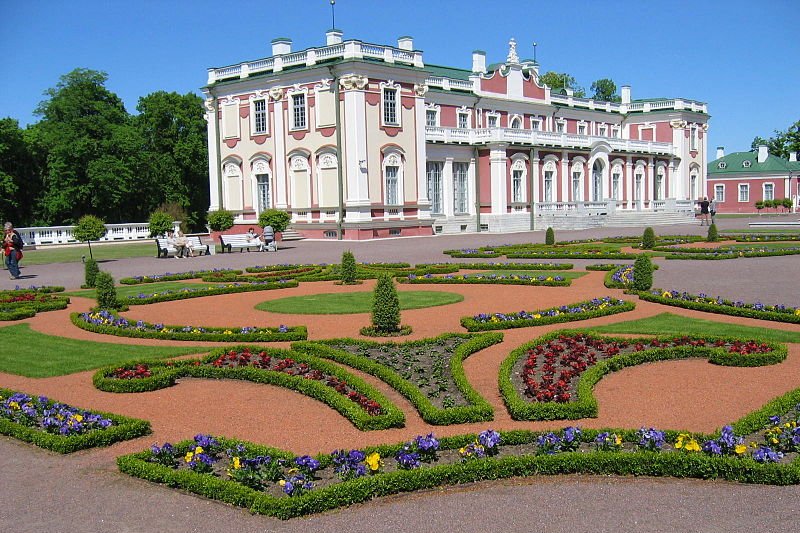 Kadriorg Palace, Tallinn
Kadriorg Palace, TallinnSource: https://commons.wikimedia.org/wiki/File:Kadrioru_loss_2005.jpg
Author: Anosmia

Tallin enjoyed its independence until 1940, when it was reoccupied, this time by the Soviet Union, at the onset of World War II. The following year, Nazi Germany invaded and occupied it until 1944, when it was again reoccupied by the USSR, which annexed it as the Estonian SSR, with Tallinn as the capital.
With the collapse of the Soviet Union in 1989, Tallinn became the capital of an independent Estonia in 1991. The city of Tallinn bear the scars of centuries of invasions, attacks, ransackings and bombings, but it has managed to retain a charming Old Town, which since 1997 has been recognised as a World Heritage Site. For the details, read the page on Tallinn World Heritage Site.
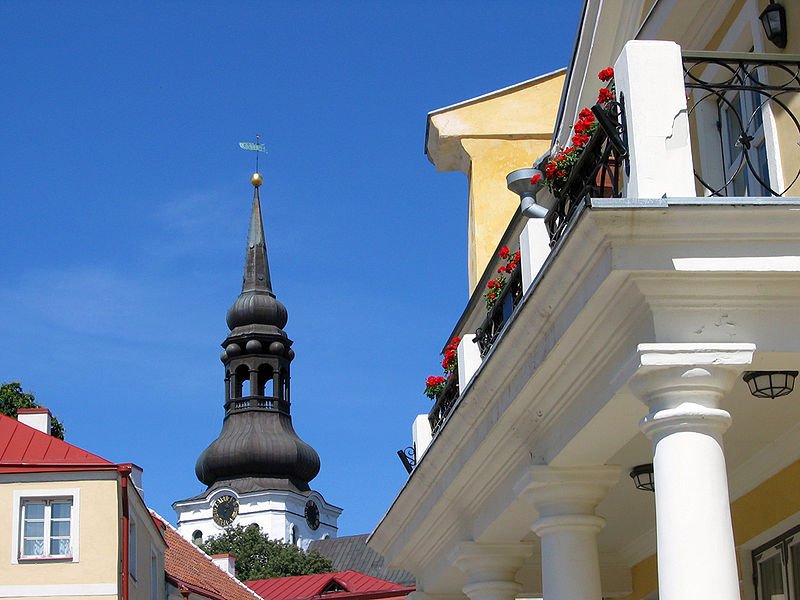 Spire of the Cathedral of St Mary the Virgin, Tallinn
Spire of the Cathedral of St Mary the Virgin, TallinnSource: https://commons.wikimedia.org/wiki/File:Tallinn-2007-rr-135.jpg
Author: Marcela

Visiting Tallinn, Estonia
Most visitors arrive in Tallinn from Helsinki, Finland. There are ferry services between the two cities. The journey takes between 1.5 hours to 3.5 hours, depending on the type of boat, and costs anywhere from €16 to €30.Tallinn Airport (TLL) is just about 4 km from downtown Tallinn. It is not a big airport, though it can take a Boeing 747. There are flights connecting it to a number of cities in Europe. Arriving at the airport, you can take the Airport Bus that makes stops at various places in the city. The fare is €2 per person. There are also public bus No. 2 that goes to the airport. As both the bus from and to the city use the same bus stop, take the bus with the "Reisisadam" signage to go to downtown Tallinn.
Exploring Tallinn
Tallinn's Old Town is best explored on foot. To go greater distances, you can take the trams, buses and trollybuses. Get the 10-ticket booklet for €6.40 or the unlimited ride pass, available for 24 hours (€4.50), 72 hours (€7.50) or longer.Places of Interest in Tallinn, Estonia
Churches and Monasteries- Alexander Nevsky Cathedral
- Cathedral of St Mary the Virgin
- Church of the Transfiguration of Our Lord
- Dominican Monastery
- Holy Brigitta Monastery
- Holy Spirit Church
- Niguliste Church
- St Olav's Church
- Adamson-Eric Museum
- Estonian Museum of Applied Art and Design
- Great Guild Hall
- Museum of Estonian Photography
- Museum of Occupations
- Museum of Theatre and Music
- National Art Museum KUMU
- Open Air Museum
- Tallinn City Museum
- City Wall
- Estonia's Parliament Building (Riigikogu)
- Fat Margaret Tower
- House of Blackheads
- Kadriorg Palace
- Kiek-in-de-Kök
- Knights' House
- Raekoja Plats
- St Catherine's Passageway
- Tallinn TV Tower
- Tallinn Zoo
- Three Sisters
- Toompea Castle
- Town Hall (Raekoda)
- Town Hall Pharmacy
- Viru Gate
 Latest updates on Penang Travel Tips
Latest updates on Penang Travel Tips
 Map of Roads in Penang
Map of Roads in Penang
Looking for information on Penang? Use this Map of Roads in Penang to zoom in on information about Penang, brought to you road by road.
Copyright © 2003-2025 Timothy Tye. All Rights Reserved.

 Go Back
Go Back